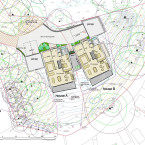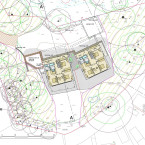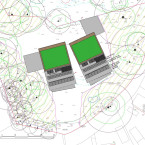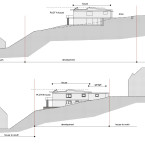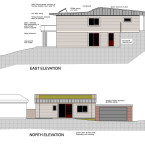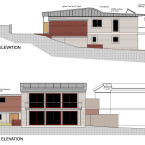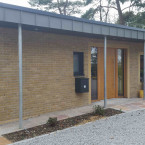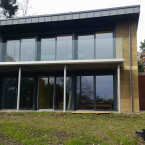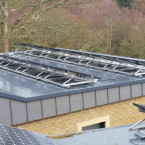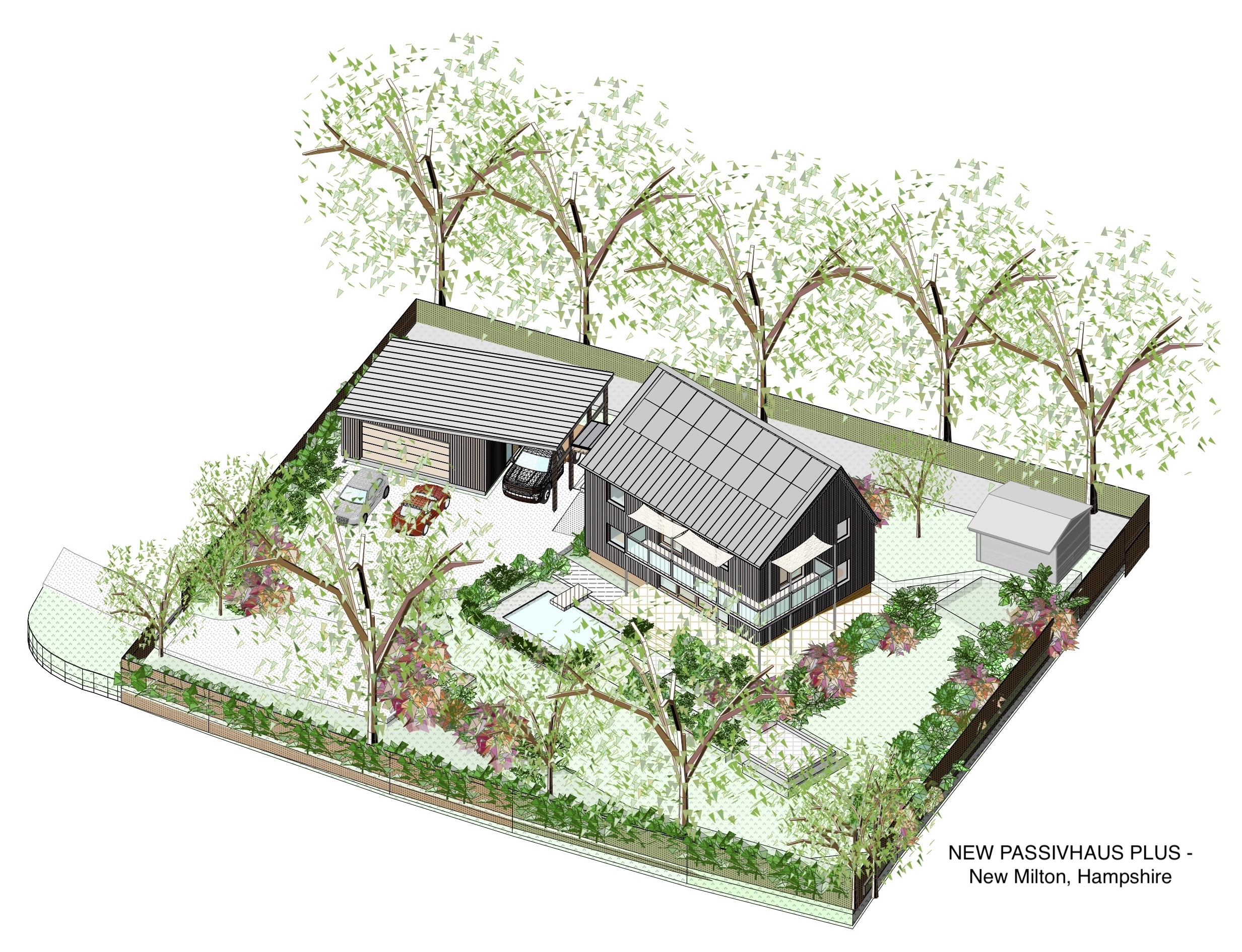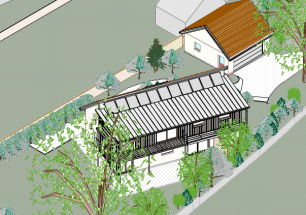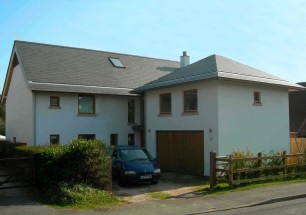2 New four bedroom detached houses in former garden
The site is situated within a well developed suburban housing area and is steeply sloped with mature trees to most of the perimeter which has restricted the available area for construction. The site slope is utilised to provide the main living accomodation to the upper floor at the front entrance level with the bedrooms at the lower level which is at ground level to that side. The houses are orientated with the main rooms with large areas of glazed doors close to south facing. The adjacent houses to the south are at lower level and sufficient distance allowing balconies to be provided to the main living areas at first floor level giving distance views to the Purbecks. The balconies also act as screening to control high level summer sun.
The form of the houses provides a compact volume to floor area which assists with the energy performance and together with the high levels of insulation and airtightness, reduction in thermal bridging, triple glazed high efficiency windows and external doors and use of whole house ventilation with heat recovery has achieved the design requirements for the Passivhaus standard. The constructions have been monitored for eventual Passivhaus Certification.
The materials have been selected to relate to the surrounding area, most notably the brickwork walls of the adjacent houses, but with stone surrounds to openings and stonework bands at floor levels also in keeping with the area. The height of the houses has been restricted to avoid excessive impingement on the house to the north which provided the site area from its former garden. Thus the roofs are to very low pitches and divided with a steeper pitched section between the two to allow for the use of roof windows and solar panels which require a greater slope. The roof to the north is designed as a “green” roof with planting to soften the impact on the house to the north. The roof to the south is finished in a membrane suitable to take a maintenance access way and further solar panels mounted on frames.
The houses have now been completed.
The need for the client builder to urgently complete the houses has resulted in the houses falling slightly short of the airtightness required to meet the full Passivhaus certification having permeabilities of 0.9 Air Changes per Hour (ACH), slightly above the 0.6 ACH required. However, for brick and blockwork and the complex one and a half storey construction, this is still a great achievement and the houses have gained an Energy Performance Certificate of “A” as well as being certified to the Passivhaus Institute Low Energy Building Standard.
